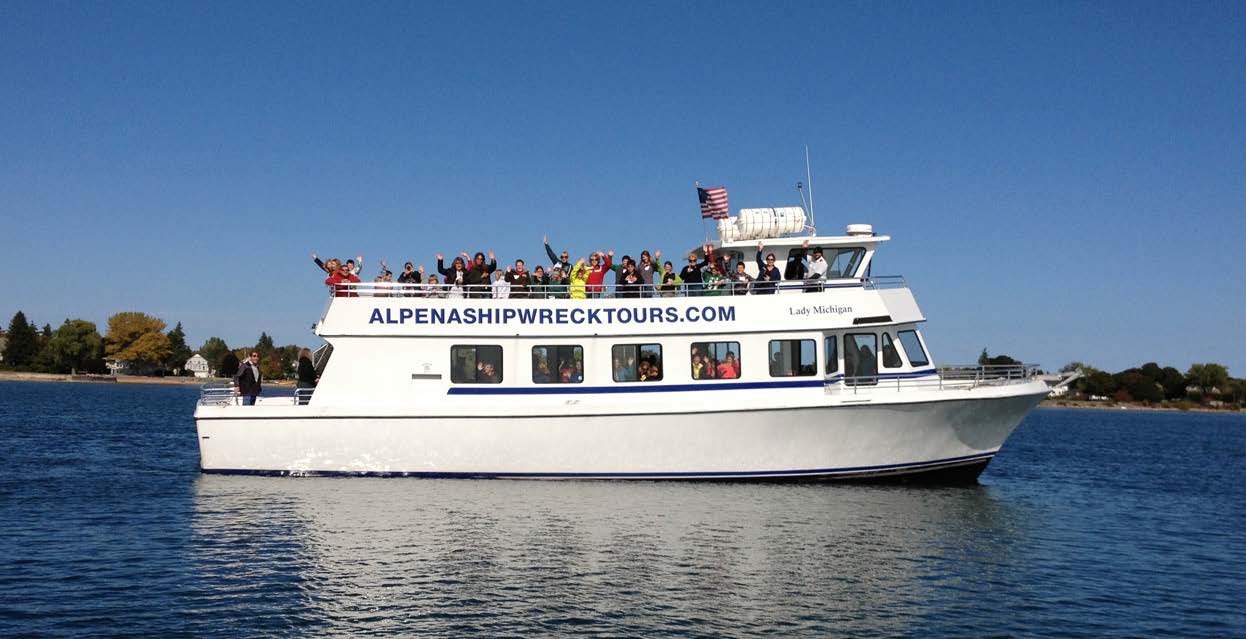
National Marine Sanctuary Foundation Announces Grants to Expand Public Engagement in America’s Blue Parks
Contact: Allison Alexander, allison@marinesanctuary.org, 301-608-3040 ext. 303
$215,000 will support tourism, youth education, and awareness of endangered species to local communities in California, Georgia, Hawaii, and Michigan
Washington, DC; January 19, 2017 – The National Marine Sanctuary Foundation today announced $215,000 in Ernest F. Hollings Ocean Awareness grants to expand public outreach in marine and Great Lakes sanctuaries, our Nation’s blue parks.
The purpose of the Hollings Ocean Awareness Awards is to increase stewardship of natural and cultural resources in America’s ocean and Great Lakes. Established in 2005, the awards represent the National Marine Sanctuary Foundation’s commitment to the legacy of former U.S. Senator Ernest F. Hollings who authored an extraordinary range of laws to safeguard America’s ocean and coasts. Senator Hollings was committed to increasing knowledge of our ocean’s value through research and education.
The National Marine Sanctuary Foundation selected five recipients. Two projects – Get Into Your Sanctuary and Estuary Explorations – support the Foundation’s goal to inspire stewardship of natural and cultural resources through America’s marine and Great Lakes sanctuaries. Three projects, funded with support from NOAA Fisheries – Holistic Engagement Strategy for Leatherback Conservation, The Whale Trail Northern California, and The Marine Mammal Center’s Nā Kōkua O Ke Kai – bring awareness to endangered and protected marine species, in partnership with NOAA’s Species in the Spotlight initiative.
“We believe in investing in public education to strengthen the stewardship of our marine and Great Lakes resources,” said Kristen Sarri, President and CEO of the National Marine Sanctuary Foundation. “The funding announced today will strengthen community engagement in sanctuaries and support local education and conservation efforts to protect endangered and threatened marine species.”
“NOAA Fisheries is pleased to be a partner in these education and outreach projects that support stewardship of the nation’s ocean resources and their habitat,” said Paul Doremus, Deputy Assistant Administrator for Operations for NOAA National Marine Fisheries Service.
Friends of Thunder Bay National Marine Sanctuary, Alpena, Mich., $50,000
“Get Into Your Sanctuary” will create a community-wide, year-round outreach campaign to increase sustainable tourism and strengthen public engagement, appreciation, and stewardship of Thunder Bay National Marine Sanctuary. It will encourage the public to literally jump into the sanctuary waters to explore fishing, diving, and paddling while learning to be good stewards of the resources. The Friends of Thunder Bay will develop the program as a model replicable in other sanctuaries throughout the U.S.
University of Georgia Marine Extension and Georgia Sea Grant, Savannah, Ga., $50,000
“Estuary Explorations: Hands on Science for Underserved Students and Families” will provide immersive, hands-on learning opportunities for 850 fourth-graders in coastal Georgia to encourage them and their families to experience public land and water areas. Funding also supports modernizing sanctuary exhibits at the University of Georgia Aquarium to share underwater experiences from Gray’s Reef National Marine Sanctuary.
The Ocean Foundation, Washington, D.C., $50,000
“Holistic Engagement Strategy on Leatherback Conservation” will support and amplify the activities of California Leatherback Sea Turtle Day, an event conducted in partnership with the Southwest Fisheries Science Center and Monterey Bay National Marine Sanctuary. The event educates the public about leatherbacks use of local waters as foraging areas, and actively engages Californians in activities that support the recovery and conservation of endangered leatherback sea turtles. The award will also support ongoing network building activities throughout the year, the development of improved outreach and education materials for the Monterey Bay National Marine Sanctuary, and a catalog of imagery and footage of leatherback sea turtles that will be available to partners and stakeholders.
The Whale Trail, Seattle, Wash., $50,000
“The Whale Trail Northern California” will add interpretive signage on the northern California coast focusing on the endangered Southern Resident Killer Whale. These interpretive signs will highlight orcas in the coastal areas near northern and central California sanctuaries, extending the trail of signage already found in the area around Olympic Coast National Marine Sanctuary. Complementary educational materials and events will help engage the public in understanding the plight of Southern Resident Killer Whales and what people can do to aid in the recovery of this species.
The Marine Mammal Center, Sausalito, Calif., $15,000
Funds support the continuation of the “Nā Kōkua O Ke Kai: Advancing Middle School Ocean Conservation and Marine Science,” first awarded in 2016, to engage 300 middle-school students and their teachers on Hawai’i Island. The 10-lesson curriculum includes special emphasis on Papahānaumokuākea Marine National Monument, its extraordinary marine life and ecosystem, and inspires students to engage their communities in the efforts to protect it and the endangered Hawaiian monk seal.
